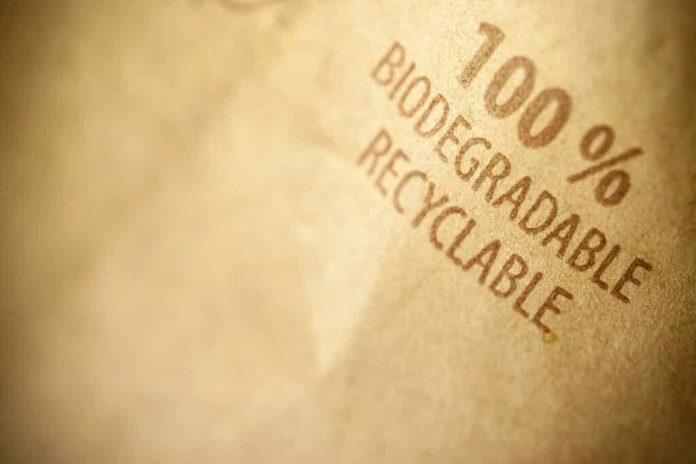In today’s world, where the focus on sustainability is increasing, biodegradable packaging has become a buzzword. Biodegradable packaging refers to packaging materials that can break down into natural components when exposed to environmental conditions such as air, sunlight, and water. These materials do not harm the environment and do not leave any waste behind. In this article, we will discuss biodegradable packaging and its uses.
What is biodegradable packaging?
Biodegradable packaging materials are made from natural sources such as plant-based materials, which break down into non-toxic substances after disposal. The use of biodegradable packaging is gaining momentum due to its sustainability benefits, and it is becoming more popular in industries such as food, medical, and cosmetic packaging.
Biodegradable packaging can be categorized into two types: bioplastics and paper-based packaging. Bioplastics are made from renewable sources such as corn, sugarcane, or cassava, while paper-based packaging is made from wood fibers. Bioplastics are considered to be more sustainable than traditional plastics, as they can be broken down by microorganisms, whereas traditional plastics are not biodegradable.
Where is biodegradable packaging used?
Biodegradable packaging is widely used in various industries, such as food, medical, and cosmetic packaging, due to its eco-friendliness and biodegradability. Here are some examples of where biodegradable packaging is used:
Food Packaging
In the food industry, biodegradable packaging is widely used to reduce the amount of waste generated by food packaging. Biodegradable packaging materials can be used for products such as snacks, fresh produce, and beverages. Biodegradable packaging can also help to preserve food quality by providing a barrier against moisture and oxygen.
Medical Packaging
Biodegradable packaging is also used in the medical industry. Medical packaging requires a high level of cleanliness, and biodegradable packaging materials can help to reduce the risk of contamination. Biodegradable packaging can be used for products such as surgical instruments, medical devices, and medication.
Cosmetic Packaging
Biodegradable packaging is also gaining popularity in the cosmetic industry. Cosmetic packaging requires packaging that is both aesthetically pleasing and functional. Biodegradable packaging can be used for products such as creams, lotions, and shampoos.
Advantages of Biodegradable Packaging
The use of biodegradable packaging offers several advantages over traditional packaging methods. Here are some advantages of biodegradable packaging:
Eco-friendly
Biodegradable packaging is eco-friendly as it does not contribute to pollution or waste. Biodegradable packaging materials can break down into natural components, which do not harm the environment. Traditional packaging methods, such as plastic packaging, are not biodegradable and contribute to waste and pollution.
Sustainable
Biodegradable packaging is sustainable as it is made from renewable resources such as plant-based materials. Traditional packaging methods use non-renewable resources such as fossil fuels. Biodegradable packaging helps to reduce our dependence on non-renewable resources.
Reduces Waste
Biodegradable packaging helps to reduce waste as it can break down into natural components, which do not contribute to waste or pollution. Traditional packaging methods, such as plastic packaging, contribute to waste and pollution as they are not biodegradable.
Disadvantages of Biodegradable Packaging
While biodegradable packaging offers several advantages over traditional packaging methods, it also has some disadvantages. Here are some disadvantages of biodegradable packaging:
Higher Cost
Biodegradable packaging is generally more expensive than traditional packaging methods. The production process for biodegradable packaging is more complicated and requires more resources, which increases the cost.
Limited Availability
Biodegradable packaging is not yet widely available, which can make it difficult for consumers and businesses to access it. This limited availability is due to several factors such as the higher cost of production, lack of infrastructure for biodegradable packaging, and limited awareness among consumers and businesses.
Less Durable
Biodegradable packaging is generally less durable than traditional packaging methods. Biodegradable materials are designed to break down quickly, which means they may not last as long as traditional packaging methods. This can be a disadvantage for products that require longer shelf life or have to be transported over long distances.
Conclusion
Biodegradable packaging is an environmentally-friendly and sustainable alternative to traditional packaging methods, with benefits such as waste reduction. Despite higher costs, limited availability, and less durability, it is widely used in various industries like food, medicine, and cosmetics. As the demand for environmentally-conscious packaging increases, biodegradable packaging is expected to become more widely used in the future. With the right infrastructure, technology, and awareness, biodegradable packaging can be a key solution to waste and pollution in the packaging industry.
